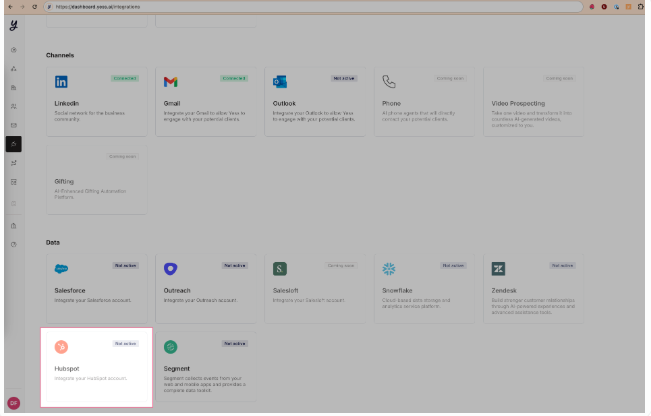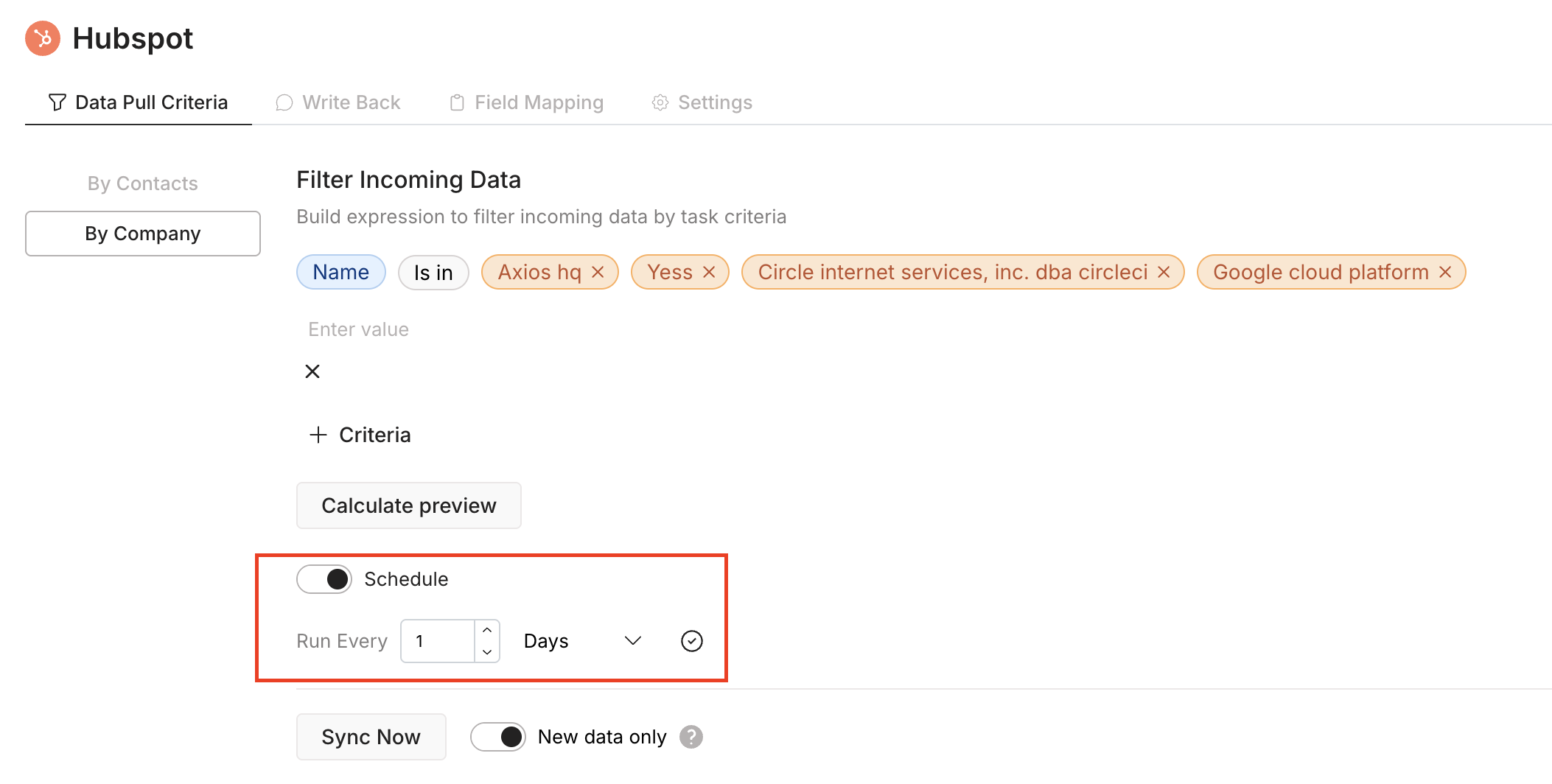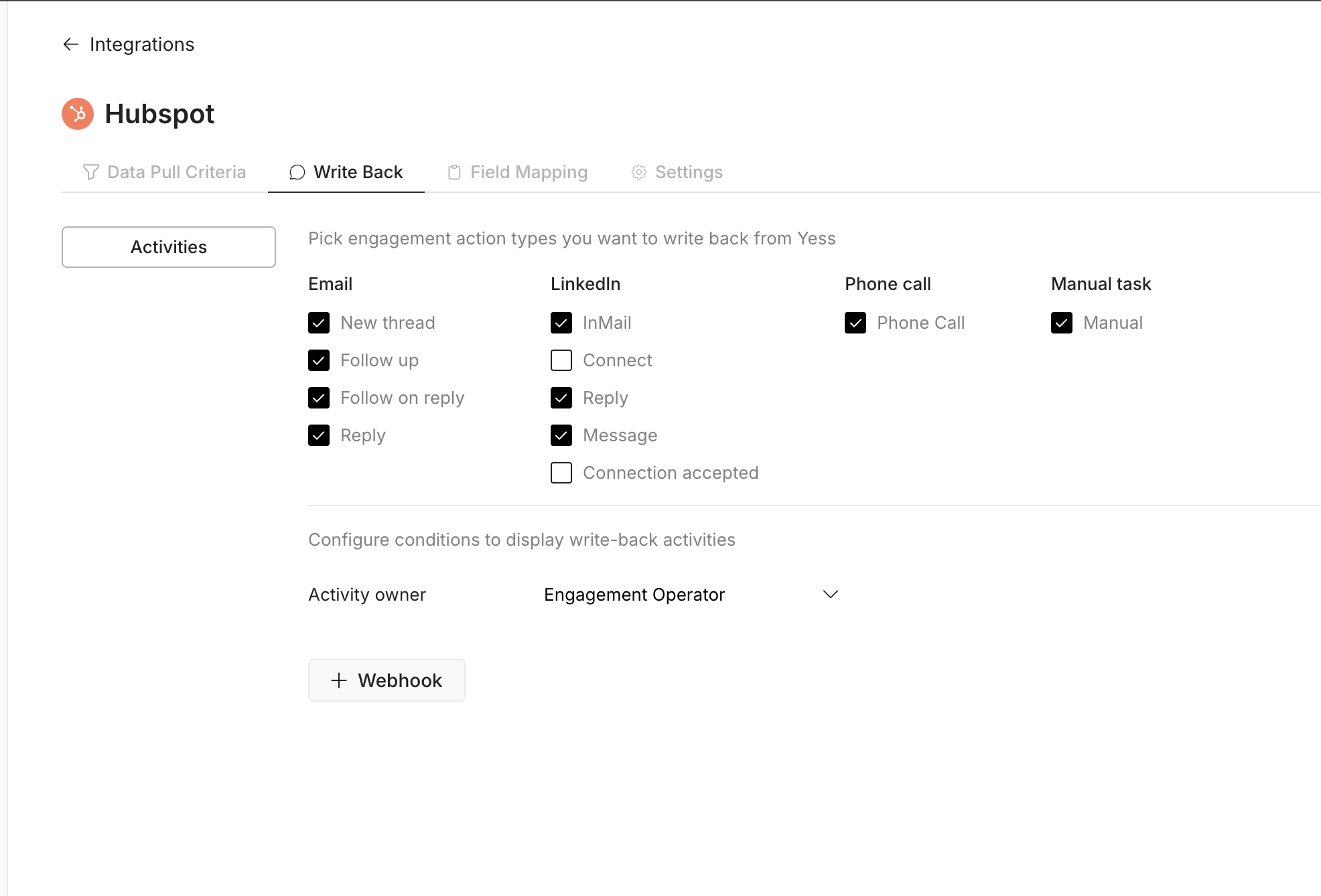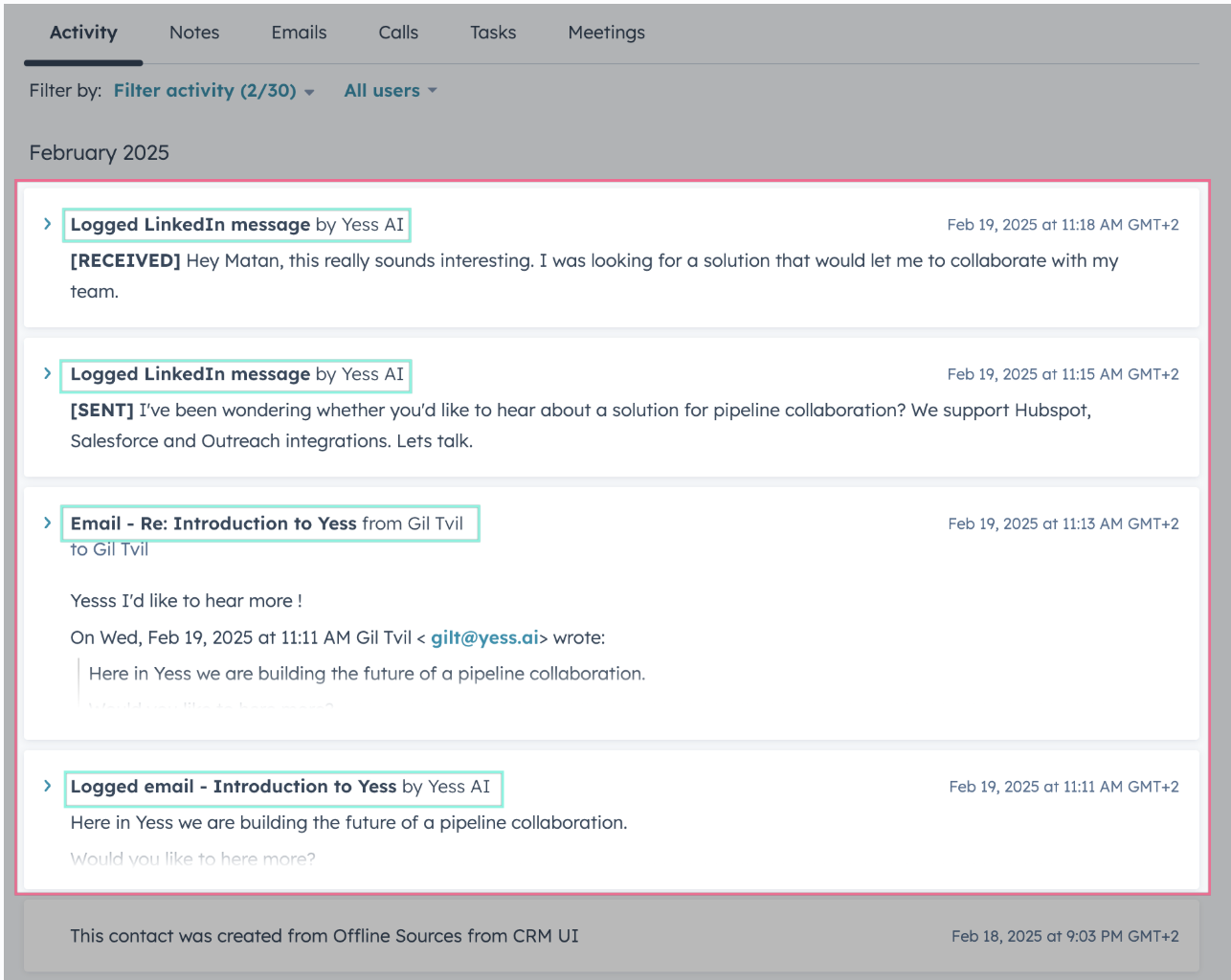Before You Get Started
Here’s what to expect when connecting HubSpot to Yess — and how the sync works behind the scenes. How Yess Works:- You can import data from multiple sources like CSV files, LinkedIn (via our extension), and integrations such as Salesforce, HubSpot, and Outreach.
- When data is pulled, Yess tries to merge records using identifiers like email or LinkedIn profile.
- We write activity data back to HubSpot only if the lead in Yess originated from HubSpot and is recognized as a HubSpot contact.
- It doesn’t create new contacts in HubSpot.
- It doesn’t track or log activities in HubSpot for leads that weren’t originally pulled from HubSpot, even if they exist there. For example: If you add a lead from Sales Navigator who isn’t already known to Yess from HubSpot, we won’t link or record activity to the matching HubSpot contact.
Accessing the Integration Settings
To get started:- Go to your Integrations menu in Yess.
- Select Hubspot from the list of supported integrations
-
You’ll see a dedicated configuration screen for Hubspot.

Only users with the Admin (Tenant) role can view and manage this setup.
Step 1: Authenticate with HubSpot
- Click Connect and follow the login flow.
- Once authenticated, you’ll see your connection status and email displayed.
Step 2: Define What Data to Sync
You can choose which records to sync from Hubspot using flexible conditions.- Use familiar Hubspot-like filters such as:
SELECT FIELDS(STANDARD) FROM COMPANY WHERE industry = 'Technology'
- Supported HubSpot objects:
- Contacts (will also pull related Companies)
- Companies (will also pull related Contacts)
- Set Schedule
- Configure when your data syncs automatically between HubSpot and Yess
-
Toggle “Schedule”: This switch enables or disables the automatic scheduling.
- If it’s turned on, the integration will run on a recurring basis.
- If it’s off, the process won’t run on a schedule (you may trigger it manually instead).
-
Choose how often the integration runs by setting a number and a time unit—for example, “Run every 1 day” means the integration will run once a day.

- Save your selected schedule by clicking the Checkmark icon
-
Manual Sync options
- If you need to sync outside of the regular schedule, you can trigger it manually:
- Sync Now: Click Sync Now to immediately sync your data based on the current sync criteria.
- New Data Only: Enable the New Data Only toggle to pull only records that were created or updated since the last sync(If disabled, the system will perform a full sync based on the selected filters).
-
Toggle “Schedule”: This switch enables or disables the automatic scheduling.
Step 3: Configure Write-Back Settings
Yess writes activities back into HubSpot as part of the integration setup. This ensures your team’s LinkedIn and email engagement history is captured and visible within your CRM.
- LinkedIn messages – Logs one-on-one messages sent via LinkedIn.
- Emails – Logs email messages sent through sequences or manual one-offs.
- LinkedIn connection requests – Tracks when a connection request was sent to a lead.
- Manual tasks – Records user-logged actions like follow-ups or notes.
- Operator – The person who executed the engagement.
- Sponsor – The person on whose behalf the message was sent.
- Admin
Admin is used as a fallback only if the selected owner (Operator or Sponsor) is not available for a specific engagement.
- Enable webhooks for near real-time syncing of write-back data.
- Customize how each type of engagement is mapped to fields or objects in Hubspot.
Step 4: Field Mapping
Map the fields from HubSpot to Yess for:- Contacts
- Companies
Step 5: Settings
Configure API Limit By default, Yess limits Hubspot API usage to prevent reaching platform limits.- Default limit: 1,000 API requests per day.
- You can update the limit and set a reset interval:
- Daily
- Monthly
- Yearly
- You can also choose to disable the limit entirely (recommended for most users).
Viewing Yess Activities in HubSpot
Once integeration is set, all activities performed in Yess are automatically logged as engagements in HubSpot. To view these:1
Open Contact Record
Navigate to any contact or company record in HubSpot
2
Check Activity Tab
Scroll to the Activity section to see all Yess activities

Accessing HubSpot Records in Yess
You can quickly access HubSpot records directly from Yess:1
Find Hubspot icon
Look for the Hubspot icon in the Leads table, “Sources” coloumn,

2
Click to Open
Click the icon to open the HubSpot record in a new tab


